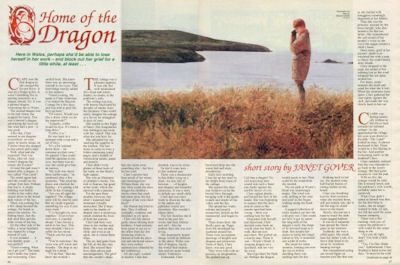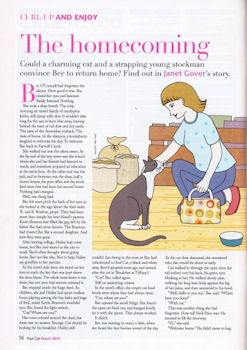This week I have been taking a break from the two – yes, I know – two novels I am writing to write a short story.
I haven’t done any shorts for a while – and had almost forgotten what fun they are.
I got my first break as a writer of fiction by writing short stories and they taught me so much that I thought I might share with you…

After a successful career as a journalist – I thought writing fiction would be easy – but I was so wrong. My first attempts at writing novels were not so good (and will never never see the light of day).
So I decided I would try my hand at short stories. At first, I played around with some sci fi and fantasy – but didn’t sell any of them. Then, inspired by a holiday in a beautiful part of Wales – I wrote a short story that could be classified as women’s fiction. And immediately sold it to a magazine.
There followed a series of stories (which you can read here) for various magazines. I learned so much writing those stories. The rejections told me what didn’t work. The acceptances told me what did. And the editors who asked for changes and then bought the reworked stories taught me the value of a good editor. There are people who turn up their noses at magazines like the People’s Friend and My Weekly. Not me. Those magazines gave me a solid grounding in my art.
A lot of people think a short story must be easier than a novel, because there are far fewer words. Well, I admit it doesn’t take as long to write – but you still have to have all the same elements as a novel. You just don’t have as much space to develop them.
Just as a novel must have characters and settings and plot – so does a short story. There must be conflict and resolution. The characters must somehow develop and change in the space of a few pages (or less – my shortest published story is less than 1,000 words). Think of it as a double espresso rather than a long flat.
 In a novel you have chapters to allow your reader to get to know and love your characters. In a short story, a few paragraphs.
In a novel you have chapters to allow your reader to get to know and love your characters. In a short story, a few paragraphs.
So the secret is – don’t waste a single word. Not even one. Consider each word, each sentence carefully. If the sentence does not directly contribute to the forward movement of the story – you can probably take it out.
Don’t clutter up you short story with too many characters. There isn’t time for the reader to get to know them. Focus on your key characters – that’s who your reader needs to care about. If the other character doesn’t directly affect the story – you can probably take them out. If they are necessary – but have only a short appearance – the waitress serving that coffee – don’t give them a name. Too many names can make it hard for the reader to focus on your key characters.
While setting is great and important – don’t give too much description. If they walk into a crowded trendy café, you don’t need to describe the décor, or the other customers, or the menu unless it is relevant to your character’s story. You need to find a way to capture the setting in just a few words.
Think of the short story as the climax of the novel. The point of where change began may be off the page – it may have been before our story began. Or it might be in the first paragraph. We don’t have the space for a complex backstory. We need the here and now.
And we must have something to lose. The worst thing I can say about a short story is that nothing happens. If the characters have nothing to lose, I won’t care for them. That’s funny – I have used the same argument when talking about characters in a novel…
But that’s how it should be. It’s all storytelling – and it doesn’t matter if the story is 1,000 words or 1,000 pages long. It’s still a story. In a short story, it has to be condensed and intensified, but the aim is always to take the reader on an emotional journey.
